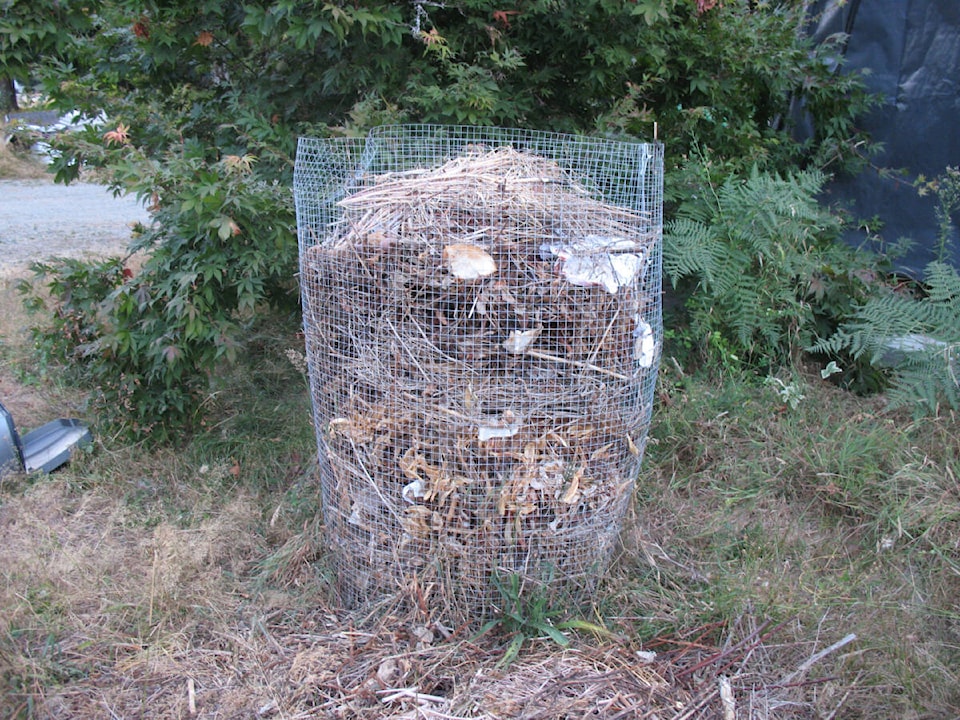By Mary Lowther
While I am experimenting this year with some trench composting from household scraps, I am also making my usual compost heap. After all (as the government proves with each new budget speech) you can’t have too much fertilizer. During the summer I have been piling up vegetation debris, and when I’m ready to make the heap I’ll buy some fresh manure for the enzymes, fill a bucket mixed with one quarter clay and three quarters water as well as buckets of good garden soil, alfalfa meal and soft rock phosphate.
Older composted manure is fine to put in the garden but enzymes will be missing; fresh manure has enzymes that break down the vegetation. I try to check what the animal has been fed as well, because the manure is only as good as what the animal ate. Our heavy rainfall can leech nutrients from the soil, depriving locally grown feed, so I prefer the byproduct from animals given extra minerals to compensate.
The bucket of good garden soil slows down fermentation and brings in garden organisms that help break down compost. Red worms incorporate soft rock phosphate and clay along with the manure and vegetation into their guts where they turn this mixture into stable humus that can last many years. Alfalfa meal adds nitrogen that helps produce nutritional compost.
I want the compost to heat up, but not so hot that nitrogen off-gases as ammonia, and soil tempers fermentation in the heap. My fall-created heap goes through one and a half years of decomposition before I use it, and because I don’t want it to heat up too quickly, I locate it in the shade.
Here’s how I make mine, following author Steve Solomon’s suggestion in his 35th edition of Growing Vegetables West of the Cascades: I line up the pile of vegetation and buckets of amendments outside the compost container with a water hose nearby and enough thick stalks like corn cut to fit crosswise on the floor of the container. I lay these stalks in a couple of layers, crisscross fashion in the container to allow air to penetrate the heap from below. Then I add the ingredients, layering them as I go, spraying the layers with water to help break down the heap. I have three containers; one will be ready next spring, one for this fall’s heap and the last one is for filling up during the year, ready to make compost in the first bin when it’s empty next fall.
Did you notice that Growing Vegetables West of the Cascades has reached 35 editions? Any gardening book that sells that many copies for that many years does so for a reason.
Please contact mary_lowther@yahoo.ca with questions and suggestions since I need all the help I can get.
